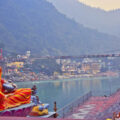A medley of cultural attractions, India is a magnet for visitors who are itching to explore its vibrant traditions.
Tourists, local and international, traverse the country visiting temples, museums, palaces, forts, tiny hamlets, the Taj Mahal, and bustling cities like Delhi and their intoxicating food scene.
Indeed these landmarks justify their popularity and deserve a place in any itinerary. However, it is not only the built or cultural heritage of India that deserves all the attention.
There is a side of India that showcases lesser-known but equally wondrous natural attractions worthy of a visit.
Many geological wonders formed through nature’s handiwork make for spectacular places to visit. The soil and rocks below our feet. The hills that rise high above the ground. Topographical features formed from billions of years of geological activity are today unique land features that make for exciting sites to visit.
Marble Rocks, Bhedaghat, Madhya Pradesh
A short drive from the industrial city of Jabalpur, the Narmada River shifts its turbulent run rather dramatically at Bhedaghat. From there, it meanders through Maheshwar & Omkareshwar. There are two remarkable formations at this focal point – Dhaundhar waterfalls and Marble Rocks that make for stunning vistas.
After the mighty plunge, the river makes its way through a narrow gorge made up of marble – a metamorphic rock said to have formed in two phases. Thus making it soft and prone to erosion. The result is a constant fresh white-looking façade that rises around 100ft from the water’s surface.
The narrow gorge and perennially white imposing marble cliffs are a sight to behold on a boat ride over the Narmada at Bhedaghat. Around sunset, the soft hues of the sun reflected gorgeously by the marble add to its charm.
However, a boat ride on a full moon night is what makes it a perfectly orchestrated spectacle by nature.
Vivekananda Rock Memorial, Kanyakumari, Tamil Nadu
Located 500m off the southern tip of India in the coastal town of Kanyakumari, the Vivekananda Rock Memorial is a popular tourist attraction.
Having both mythological and historical significance, it remains on the must-visit list of every visitor to Kanyakumari.
Here, three waterbodies – the Bay of Bengal, the Arabian Sea, and the Laccadive Sea- meet. The rocks afford some of the most mesmerizing sunrise and sunset views.
Not many, however, know that it is also a junction where the supercontinent Gondwana split into different landmasses. These eventually became India, Madagascar, Sri Lanka, East Antarctica, and Australia.
This is among the few places on earth where the ancient charnockites formed over 600 million years ago under the earth’s crust lie exposed for our viewing pleasure.
Lonar Lake, Near Aurangabad, Maharashtra
The result of a deep impact caused by a meteorite, estimated to have hit the earth’s surface over 50,000 years ago, the Lonar crater, is of immense significance for the scientific world.
It is the sole impact crater on volcanic basalt rock and hence makes for an excellent analog to study craters on the moon’s surface.
The crater is 1.8km wide and 150m deep and encompasses a lake with both alkaline and saline water. This supports a unique ecosystem rarely found anywhere else in the world.
The lake’s surroundings also play host to a variety of birds, making it a paradise for birdwatchers. Though delipidated, one can also find ruins of temples, said to be over 1000 years old, dotting the lake’s periphery. Consequently, a hike to the rim is worth the effort.
Borra Caves, Araku Valley, Andhra Pradesh
Discovered by a British Geologist named William King way back in 1807, the Borra caves located in the Anantagiri Hill range lie about 90Kms north of Vishakhapatnam.
Naturally formed, these caves are believed to be at least 150 million years old, with anthropological evidence revealing human settlement as early as the middle Palaeolithic period.
The magnanimity of the caves is evident from the grand entrance to it, which is at least 100ft in height! Inside is a maze of stalagmites and stalactites. Beautifully illuminated, they add another layer of grandiose to the setting.
These formations carved out by the waters of the Gosanthi River over millennia are today at the mercy of our imagination. Visitors will also find a temple dedicated to Lord Shiva here. It comes complete with a stone shaped like a Shiva lingam and another like a cow (Nandi).
St. Mary’s Islands, Udupi, Karnataka
This group of six islands (four large and two small) is located about 60Kms from Mangalore off the coast of Malpe.
The hexagonal and polygonal columnar basalt rocks (basically solidified lava) that lie at the fringes of the islands look like the carved pillars of an abandoned palace.
The rock formations are the only examples found in India of volcanic activity over 60 million years ago. The happening is known as the Marion event that separated India from Africa and also formed Madagascar. So the rocks found in Madagascar are similar to the ones on St. Mary’s island!
Reminiscent of the Giant’s Causeway in Ireland, though much smaller in scale, the St. Mary’s Islands are also said to have been a pit stop for the Portuguese explorer, Vasco Da Gama, on his voyage towards Calicut in 1498. He is credited to have put a cross on the island and named it El Padron de Santa Maria after Mother Mary.
Gandikota, Andhra Pradesh
The deep gorge/canyon carved by the Pennar River might seem like it is in the middle of nowhere but has great historical and geological importance.
Owing to its location and form, it was of great strategic importance for many dynasties, from the Kakatiyas to the Qutubshahis.
The Gandikota fort adjoining the ravine is a testimony of the gorges’ importance as a natural defense system. It is even named after the gorge – gandi in Telugu means gorge.
This natural defense system is a result of centuries of erosion of the Pink Granite by the river. Today it grants us a breath-taking natural wonder. Camping here overnight is a wonderful way to take in the beauty of the canyon.
Photos: Unsplash and Pixabay










1 Comment
popsiclesociety
Beautiful places to see!